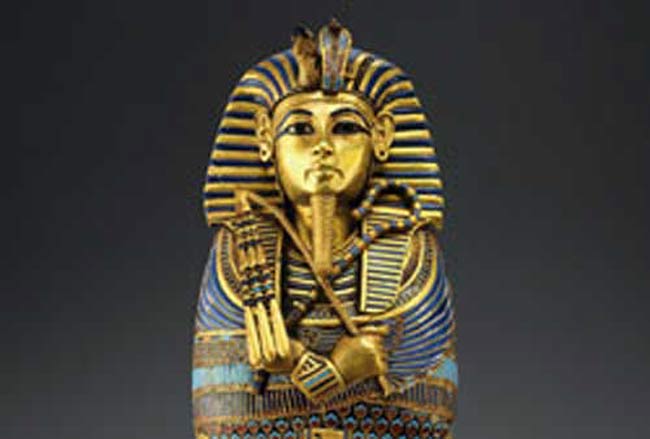King Tut's Parents Were Cousins, Not Siblings: Researcher

Updated Friday, Feb. 15, at 6:25 p.m. ET
For all the popularity Tutankhamun enjoys today, key details about the ancient Egyptian pharaoh's life, such as his parentage, have remained somewhat mysterious. While Akhenaten was known to be King Tut's dad, the identity of the boy king's mother has remained elusive. But at least one archaeologist believes she was Nefertiti.
Recent DNA analyses from the mummies of Tut and his kin revealed that the boy king's parents were siblings. Those results, published in the Journal of the American Medical Association (JAMA) in February 2010, pointed to the "heretic" king Akhenaten and one of his sisters as the mom and dad of Tut.
But researcher Marc Gabolde said in a talk at Harvard University last week that he believes King Tut's mom was Akhenaten's cousin Nefertiti, who was Akhenaten's chief wife and the mother of six of his daughters.
Gabolde said the genetic closeness of Tut's parents does not necessarily point to a brother-sister pairing. Rather, it could be due to three successive generations of marriage between first cousins, he said.
"The consequence of that is that the DNA of the third generation between cousins looks like the DNA between a brother and sister," Gabolde said, according to the Harvard Gazette. "I believe that Tutankhamun is the son of Akhenaten and Nefertiti, but that Akhenaten and Nefertiti were cousins."
Zahi Hawass, head of Egypt's Supreme Council of Antiquities, disputed Gabolde's claim. Hawass, who led the 2010 JAMA study, told LiveScience in an email Friday (Feb. 15) that his team's research showed that Tut's mother was, like Akhenaten, the daughter of Amenhotep III and Queen Tiye. Hawass added that there is "no evidence" in archaeology or philology to indicate that Nefertiti was the daughter of Amenhotep III.
Get the world’s most fascinating discoveries delivered straight to your inbox.
Gabolde is the director of the archaeological expedition of Université Paul Valery-Montpellier III in the Royal Necropolis at el-Amarna, a city built on the banks of the Nile by Akhenaten, the son of Amenhotep III and Queen Tiye who ushered in a brief period of monotheism in Egypt through worship of the sun disk, Aten.
King Tut was part of the 18th dynasty of the Egyptian New Kingdom, which lasted from about 1550 B.C. to 1295 B.C. He died in the ninth year of his reign, circa 1324 B.C., at the age of 19, leaving no heirs. Several ideas have popped up about possible diseases that may have wreaked havoc on his family as well as the cause of Tut's early demise, with some evidence suggesting he died in part from malaria and bone abnormalities.
Follow LiveScience on Twitter @livescience. We're also on Facebook & Google+.



